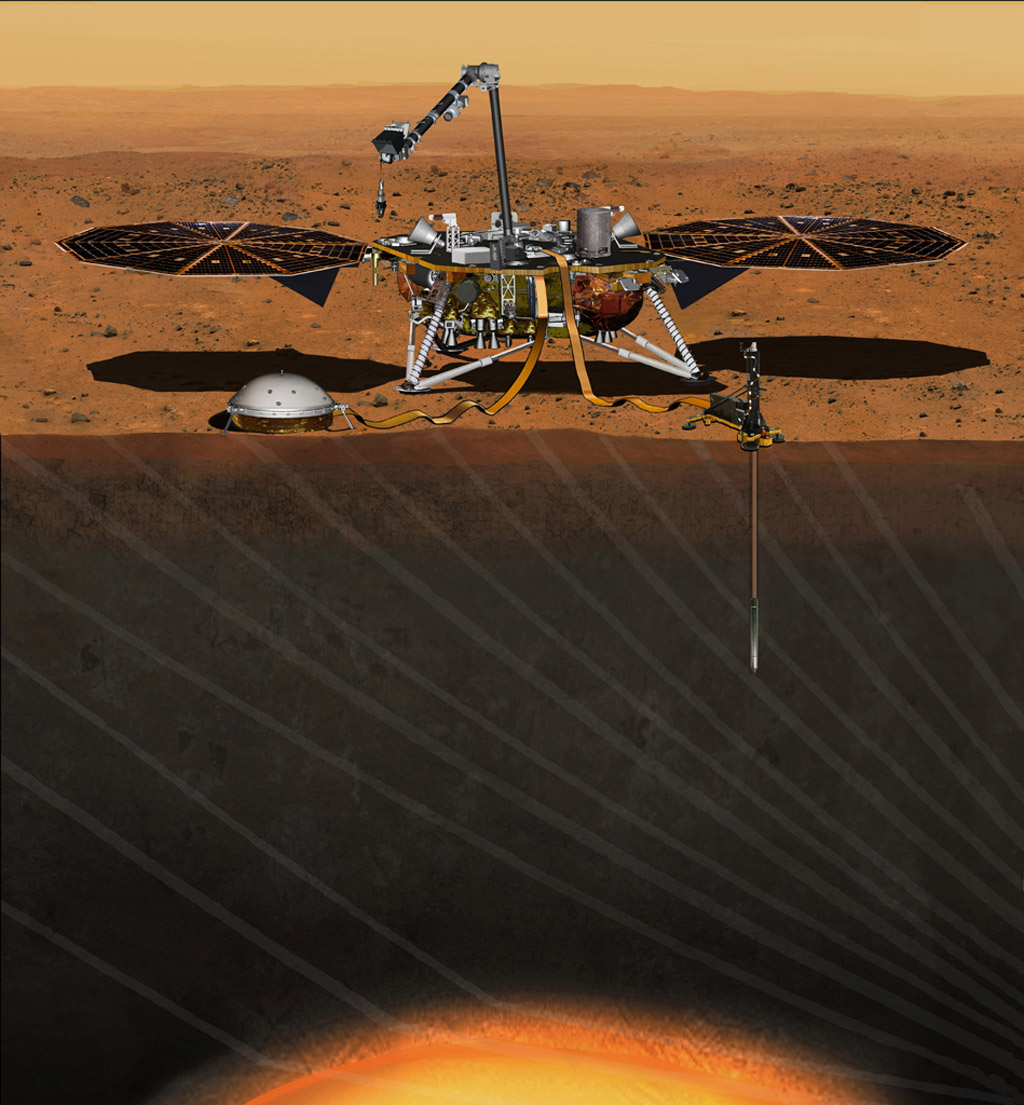NASA's Delayed Mars Lander Will Launch in 2018

A mission to study the inner workings of Mars is now set to launch in the spring of 2018, NASA announced today (Sept. 2).
The Interior Exploration using Seismic Investigations, Geodesy and Heat Transport, or InSight, was originally scheduled to launch in March 2016, but NASA delayed the launch indefinitely due to a serious structural problem with one of the probe's two science instruments.
Now, scientists with NASA's Jet Propulsion Laboratory have been tasked with fixing the problem before the 2018 launch date. The instrument redesign and delayed launch date will add $153.8 million to the initial $675 million budget, NASA officials said in a statement. [What's Inside Mars? NASA's InSight Mission Will Probe Deep | Video]
The probe must be launched during a particular window, when the Earth and Mars are positioned in such a way that the probe can easily reach the Red Planet. That window will open on March 5, 2018, according to the statement. The probe is now scheduled to land on Mars on Nov. 26, 2018.
The InSight mission's central aim is to understand how Mars and other rocky planets formed. The probe will land on the Red Planet surface and stay there for a full Mars year (687 Earth days). Two instruments on board InSight will study the planet's internal geologic activity, as well as the internal temperature of Mars.
By studying the planet's interior, scientists will gather clues about the planet's history, including how it formed, the statement said. Zooming out, this information can be fed into an understanding of how the other rocky planets in the solar system formed and how rocky planets might form around other stars.
The delay in launch was caused by a problem with one of the probe's instruments, the Seismic Experiment for Interior Structure (SEIS), which will measure very small seismic activity on Mars. The instrument "requires a perfect vacuum seal around its three main sensors in order to withstand harsh conditions on the Red Planet," according to the statement, but inspections done ahead of the initial launch date found leaks in the vacuum chamber.
Get the Space.com Newsletter
Breaking space news, the latest updates on rocket launches, skywatching events and more!
The SEIS instrument was initially provided by the French Space Agency (CNES), with the participation of the Institut de Physique du Globe de Paris (IPGP), the Swiss Federal Institute of Technology (ETH), the Max Planck Institute for Solar System Research (MPS), Imperial College and the Jet Propulsion Laboratory (JPL), according to NASA's website.
Under the new plan, JPL scientists will be responsible for "redesigning, developing and qualifying" the portions of the instrument that failed. CNES will "focus on developing and delivering the key sensors for SEIS, integration of the sensors into the container, and the final integration of the instrument onto the spacecraft."
"We've concluded that a replanned InSight mission for launch in 2018 is the best approach to fulfill these long-sought, high-priority science objectives," Jim Green, director of NASA's Planetary Science Division, said in the statement.
While the budget increase will not affect any current missions, NASA officials said there "may be fewer opportunities for new missions in future years, from fiscal years 2017-2020."
"It's gratifying that we are moving forward with this important mission to help us better understand the origins of Mars and all the rocky planets, including Earth," Geoff Yoder, acting associate administrator for NASA's Science Mission Directorate, said in the statement.
Follow Calla Cofield @callacofield.Follow us @Spacedotcom, Facebook and Google+. Original article on Space.com.
Join our Space Forums to keep talking space on the latest missions, night sky and more! And if you have a news tip, correction or comment, let us know at: community@space.com.

Calla Cofield joined Space.com's crew in October 2014. She enjoys writing about black holes, exploding stars, ripples in space-time, science in comic books, and all the mysteries of the cosmos. Prior to joining Space.com Calla worked as a freelance writer, with her work appearing in APS News, Symmetry magazine, Scientific American, Nature News, Physics World, and others. From 2010 to 2014 she was a producer for The Physics Central Podcast. Previously, Calla worked at the American Museum of Natural History in New York City (hands down the best office building ever) and SLAC National Accelerator Laboratory in California. Calla studied physics at the University of Massachusetts, Amherst and is originally from Sandy, Utah. In 2018, Calla left Space.com to join NASA's Jet Propulsion Laboratory media team where she oversees astronomy, physics, exoplanets and the Cold Atom Lab mission. She has been underground at three of the largest particle accelerators in the world and would really like to know what the heck dark matter is. Contact Calla via: E-Mail – Twitter









